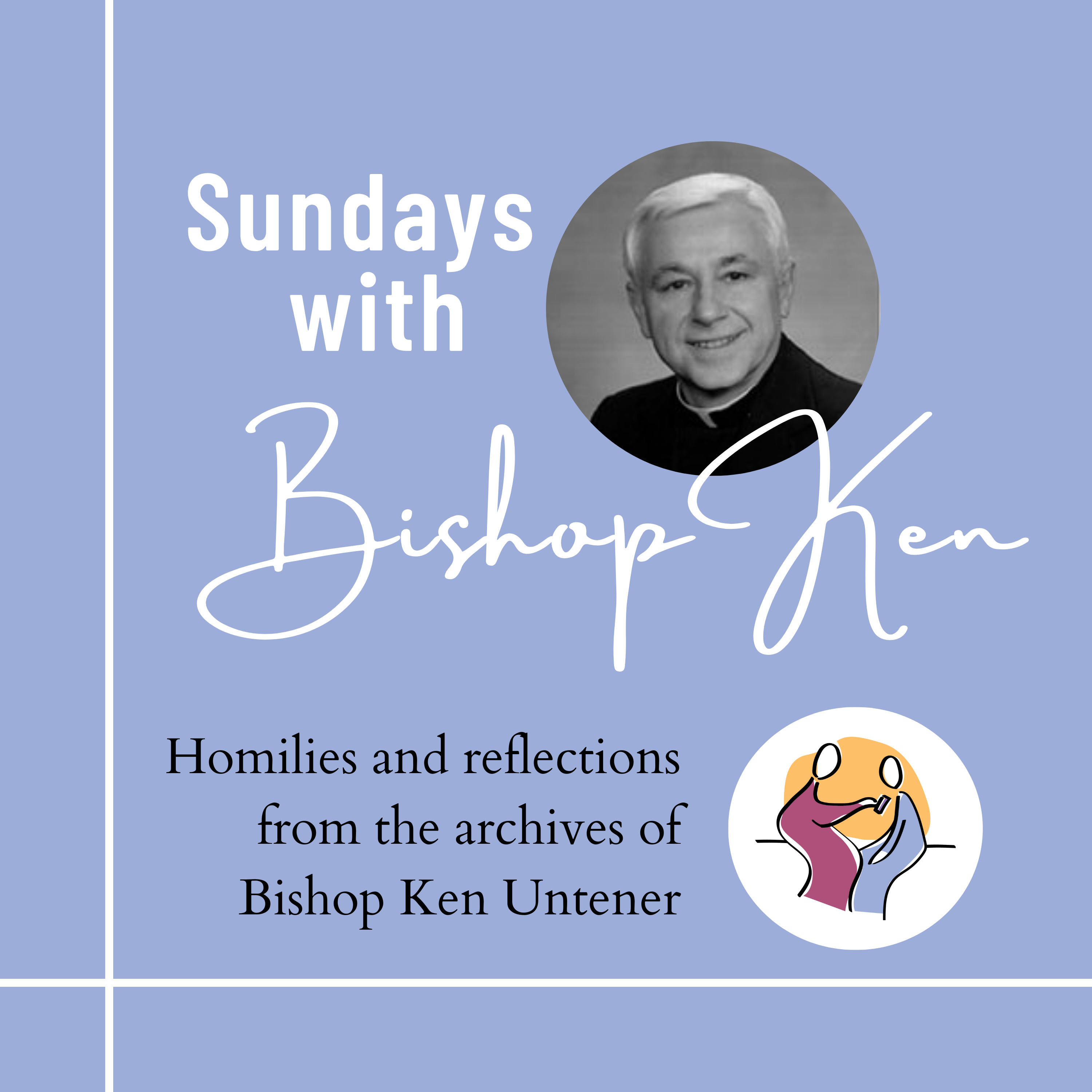Episode Transcript
[00:00:00] Speaker A: Foreign this is Sundays with Bishop Ken.
Thank you for sharing some quiet time with the Lord for the next several weeks. Our guest reader is Deacon Eric Bissette, a permanent deacon of the Diocese of Rochester, New York. You may recognize Deacon Eric as a regular reader on the Little Books app.
Let's listen now.
[00:00:39] Speaker B: A reading from the Holy Gospel according to Luke when the days were completed for their purification according to the law of Moses, Mary and Joseph took Jesus up to Jerusalem to present him to the Lord. Just as it is written in the Law of the Lord, every male that opens the womb shall be consecrated to the Lord and to offer the sacrifice of a pair of turtle doves or two young pigeons in accordance with the dictate in the law of the Lord.
Now there was a man in Jerusalem whose name was Simeon. This man was righteous and devout, awaiting the consolation of Israel, and the Holy Spirit was upon him.
It had been revealed to him by the Holy Spirit that he should not see death before he had seen the Christ of the Lord.
He came in the Spirit into the temple, and when the parents brought in the child Jesus to perform the custom of the law in regard to him, he took him into his arms and blessed God, saying, now, Master, you may let your servant go in peace according to your word, for my eyes have seen your salvation, which you prepared in the sight of all the peoples, a light for revelation to the Gentiles and glory for your people Israel.
The Gospel of the Lord Luke goes out of his way to place this event in the setting of the law.
Joseph and Mary and Jesus went to the temple to fulfill the law.
Onto the scene comes Simeon and Anna, two people whose lives were deeply rooted in the Temple, the symbol of all that Judaism was this was not a confining setting. All these people, Joseph, Mary, Jesus and Simeon and Annasaw the Law as something holding the promise of a new horizon.
They lived within the Law in expectation of something yet to come.
For them, the law was a seed, not soil. It was a path, not a prison.
Much of this comes together in the person of Simeon. He's a combination of the watchman and the aged, the watchman looking to the horizon and waiting for someone new to come. The aged who has known the law for many years and kept it, and who, because of his extended life experience, has a great deal of wisdom.
When I sat in those pews as a student, I was a watchman. I was watching and waiting for Vatican ii, which held so much promise.
When I left here to be ordained. The council was in its first year and you. You now are watchmen, waiting and looking to the horizon for those things that hold promise.
The question is, are you also willing to be the aged? You see, that combination has to exist in the same person.
Each of us has to be watchmen and aged. It isn't enough for the community to have some of each within that community will be divided.
What we need is the combination within the same individual.
To be only the aged is to be bitter about the new. To be only the watchman is to be bitter about the past, to be disdainful regarding it simply as an unpleasant night shift as you wait for the dawn in relief.
For some of you, the temptation will be to forsake the role of the aged, to be only watchmen, to look only to the new, to look away from the night that has ended our roots, the very roots that hold the promise of the future, those traditions symbolized by people such as the Fathers, Augustine, Benedict, Thomas Aquinas, Pope John XXIII and Vatican II itself.
For others, the temptation will be to forsake the role of being a watchman and to only be the aged, resisting even to look at whatever promise such things as liberation theology hold or consensus liturgical development.
As an aside, it's worth mentioning that this same struggle goes on within our individual lives.
How shall we regard ourselves as watchmen wanting to be someone we are not, or as aged, afraid even to think of growing and becoming someone different?
Even in our own lives? We have to be willing to be both.
Perhaps we can use a candle as an analogy for this.
If you take a wick of a candle and pull it all the way out so that it has no roots left in the wax, it will burn brightly, but briefly. In a flash, it's gone.
You cannot leave the past behind that way.
Or you can take that same candle, leave the wick deep in its roots, but never light it. The candle remains dead.
We need to learn to let that wick lie deep in its roots and to light it and let it burn as a light for all the world to see.
[00:06:30] Speaker A: Thanks for joining us today.
This podcast is brought to you free of charge by Little Books to help support our ministry. Please donate by clicking the Donate button now. And of course, why not tell a friend about this podcast?
We will begin our Lenten journey with the Little Black Book beginning March 2, the Sunday before Ash Wednesday.
Sundays with Bishop Ken is produced by Little Books of the Diocese of Saginaw.
For more information about Little Books and great resources for the whole family, visit littlebooks.org.


